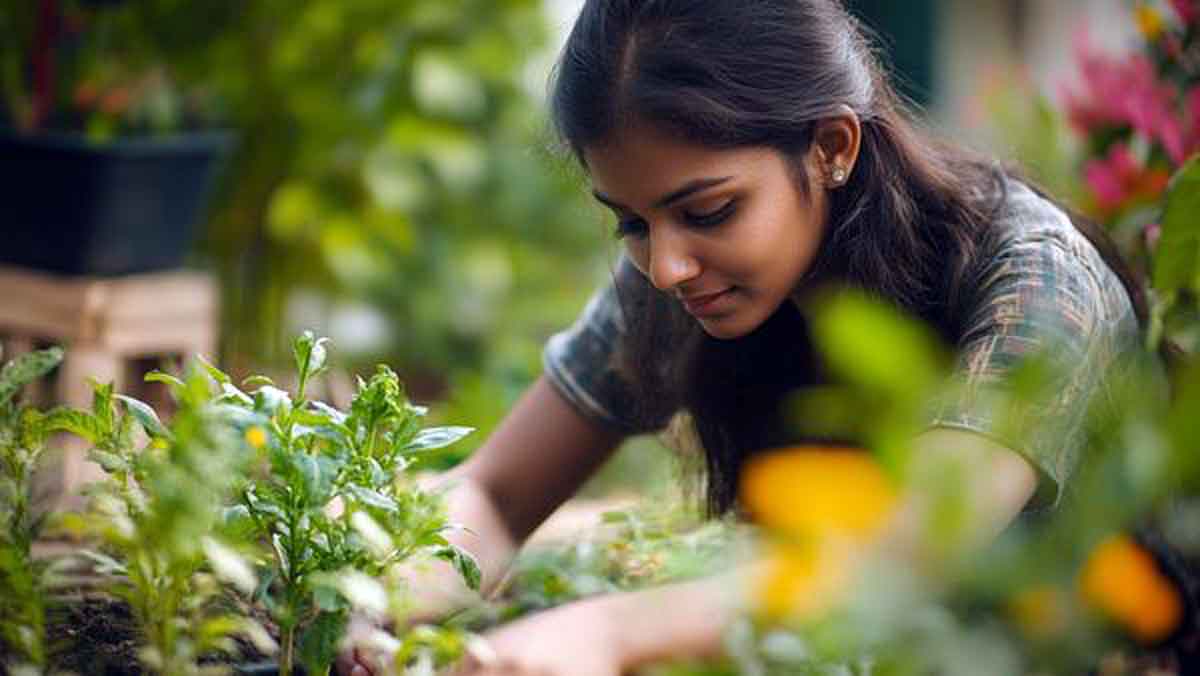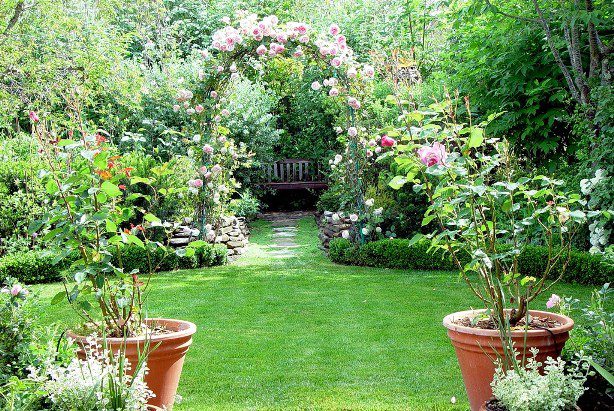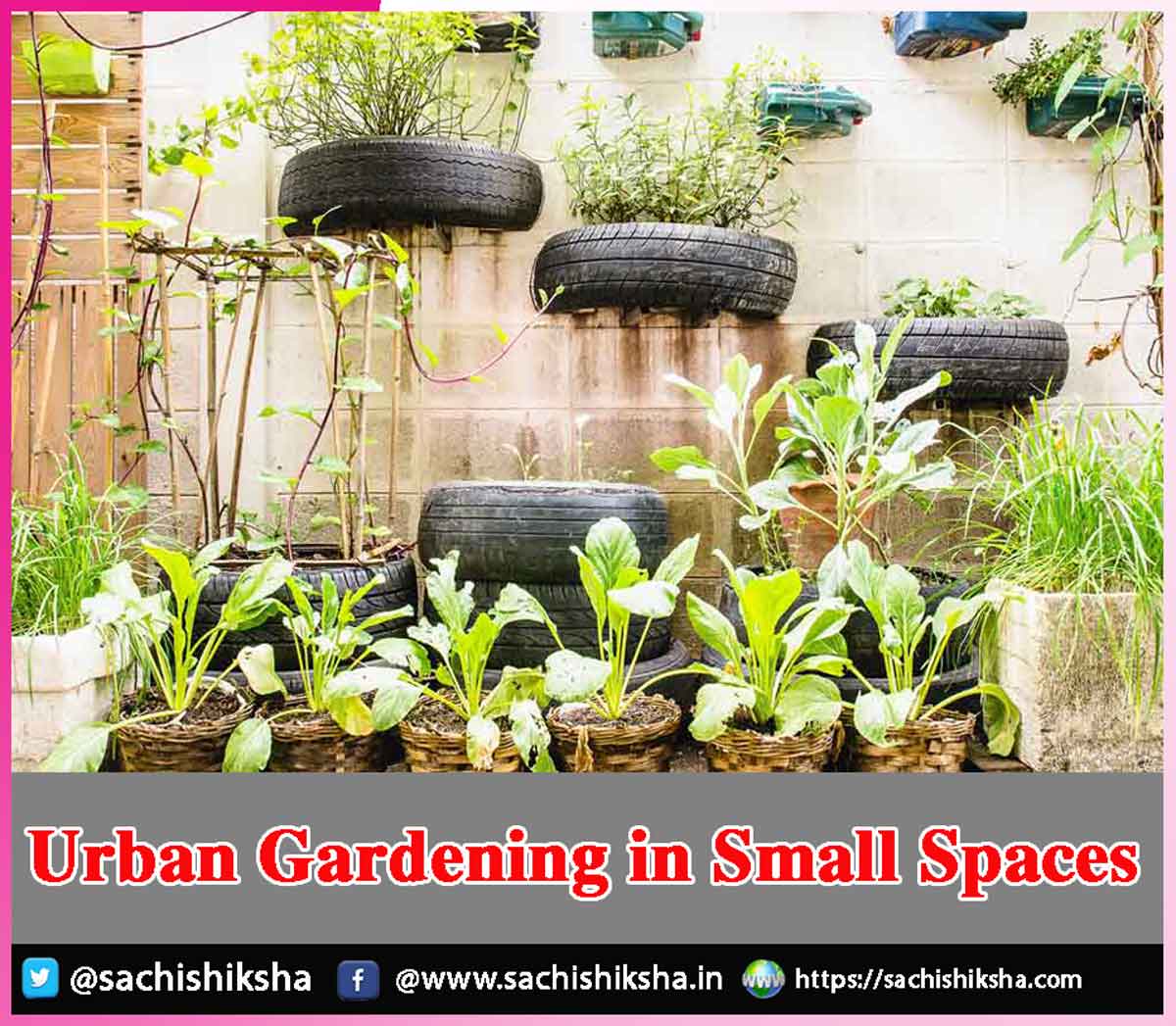Urban Gardening in Small Spaces
Introduction: In a world of concrete jungles and rapid urbanization, the desire to reconnect with nature has taken root in creative and compact ways. Urban gardening in small spaces is no longer just a trend—it’s a lifestyle choice driven by a desire for sustainability, self-sufficiency, and serenity. Whether you’re growing herbs on a windowsill, vegetables on a balcony, or flowers on a rooftop, small-space urban gardening is revolutionizing how city dwellers think about food, environment, and personal well-being.
Table of Contents
Greening the Urban Landscape
Urbanization has drastically reduced access to arable land, making traditional gardening almost impossible for many. However, the surge of interest in urban gardening shows how innovation and determination can turn the smallest corners into flourishing green havens. It aligns perfectly with modern concerns such as food security, environmental health, mental wellness, and community engagement.

The Benefits of Urban Gardening
Urban gardening provides numerous benefits, ranging from ecological to therapeutic. Here’s why more people are digging into it:
2.1 Health and Nutrition
Home-grown produce is fresher, pesticide-free, and more nutritious than store-bought options.
Urban gardens promote a nutritious diet and way of life through making wholesome produce more readily available.
2.2 Mental Health and Stress Relief
Gardening is a therapeutic activity. Tending to plants fosters mindfulness, reduces stress, and improves mood. Green spaces have been linked to lower anxiety levels and better mental clarity.
2.3 Environmental Impact
Urban gardens help reduce carbon footprints by decreasing food transport needs. They also help pollinators, improve the condition of the air, and control climates through shelter and irrigation.
2.4 Economic Savings
Growing your own vegetables and herbs can significantly cut down on grocery bills. Over time, a well-maintained small garden can become economically advantageous.
2.5 Community Engagement
Community gardens in apartment complexes or neighborhoods foster interaction, cooperation, and a shared sense of purpose among urban residents.
Choosing the Right Garden Type for Small Spaces

3.1 Container Gardening
Ideal for balconies, patios, and rooftops, container gardening uses pots, buckets, and recycled containers to grow plants. It’s versatile, mobile, and excellent for controlling soil quality.
3.2 Vertical Gardening
When floor space is scarce, go vertical. Wall-mounted planters, hanging baskets, and vertical frames allow you to grow upwards, making excellent use of vertical real estate.
3.3 Windowsill Gardening
Perfect for apartments, a sunny windowsill can support herb pots, micro greens, or even tomatoes. It’s an excellent starting point for beginners.
3.4 Hydroponics and Aquaponics
For tech-savvy urbanites, soilless gardening methods like hydroponics and aquaponics are great options. They use nutrient-rich water instead of soil and can be compact, clean, and productive.
3.5 Rooftop Gardens
If the building permits, rooftops can be transformed into mini-farms or lush retreats. They require planning and structural assessment but offer great sun exposure and space.
Planning Your Urban Garden
A successful urban garden begins with thoughtful planning. Consider the following steps before you dig in:
4.1 Assess Your Space
Measure your space and note the hours of sunlight it receives. South-facing areas get the most light and are suitable for sun-loving plants like tomatoes and peppers.
4.2 Choose the Right Plants
Choose plants that flourish in the environment and fit the area and sunshine requirements. Leafy greens, herbs, cherry, tomatoes, chilies, and strawberries are great for beginners.
4.3 Container Selection
Choose containers with proper drainage. Recycled containers like crates, tins, or PET bottles can be repurposed. Size matters—deeper pots for root vegetables, shallow ones for herbs.
4.4 Soil and Fertilizer
Use lightweight potting mix for containers. Supplement with compost or organic fertilizer. Container soil needs to be well-draining yet moisture-retentive.
4.5 Watering and Maintenance
Urban gardens often dry out quickly due to small soil volume. Regular watering, mulching, and monitoring are essential. Self-watering systems can help with consistency.
Plant Choices for Small-Space Urban Gardens
When growing in limited areas, plant selection is crucial. Here are ideal options:
5.1 Herbs
Basil, thyme, oregano, parsley, mint, cilantro, require minimal space and thrive in pots or small containers. Frequent harvesting encourages growth.
5.2 Vegetables
Leafy greens (spinach, lettuce, and arugula), cherry, tomatoes, peppers and radish, carrots (in deep containers) can be grown in urban gardening.
5.3 Fruits
Strawberries (hanging baskets).
Dwarf citrus trees (in large pots).
Figs (patio containers).
5.4 Flowers and Ornamentals
Marigolds (pest repellents).
Petunias, pansies (color and pollinators).
Nasturtiums (edible and beautiful).
5.5 Climbing Plants
Beans, cucumbers, gourds.
Can be grown on trellises or vertical nets.
Tools and Accessories for Urban Gardening
You don’t need a garage full of tools. Just a few essentials like hand trowel, pruning scissors, watering can or spray bottle, gloves, garden twine or clips, support structures (stakes, trellises, and frames) can make urban gardening easier:
Advanced gadgets include: Moisture meters, Self-watering planters and Hanging planter systems are the advanced gadgets that make urban gardening easier.
Overcoming Common Urban Gardening Challenges
7.1 Limited Sunlight
Urban buildings often cast shadows. Use reflective surfaces like mirrors or white walls to enhance light, or choose shade-tolerant plants like mint, parsley, and spinach.
7.2 Pest Control
Urban pests like aphids or mites can harm plants. Use organic solutions—neem oil spray, companion planting (e.g., marigolds), and regular leaf inspection.
7.3 Space Constraints
Maximize vertical space, use railing planters, and stack containers. Foldable or multi-tiered shelves can also expand growing areas.
7.4 Weather Extremes
Balconies and rooftops may be exposed to wind and heat. Use windbreaks, shade cloths, and mulch to regulate conditions.
7.5 Water Access
If carrying water is a chore, install a drip irrigation system or use self-watering containers. Rainwater harvesting (if allowed) is another option.
Urban Gardening for Sustainability
Urban gardening supports larger sustainability goals:
8.1 Reducing Food Miles
Home-grown food goes a few steps, instead of hundreds of kilometers. This reduces fuel usage and the emission of greenhouse gasses.
8.2 Composting Waste
Kitchen scraps can be turned into compost, enriching your soil and reducing landfill contributions.
8.3 Pollinator Support
Urban gardens attract bees, butterflies, and other pollinators that are crucial for ecological balance.
8.4 Urban Heat Reduction
The plants cool the air, minimizing the metropolitan heat- island effect and interior cooling requirements.
Community and Educational Impact
Urban gardening extends beyond personal benefit:
9.1 Community Gardens
Shared gardens in neighborhoods or apartment complexes promote social connection, collective learning, and food sharing.
9.2 School and Youth Programs
Teaching children to grow food instills responsibility, patience, and a deeper understanding of nature.
9.3 Therapeutic Gardens
Hospitals and senior centers now incorporate green areas as part of holistic healing.
Future Trends in Urban Gardening
Gardening in cities evolves with innovation and imaginative thinking:
10.1 Smart Gardening
IoT devices, smart phone apps, and automated water systems simplify gardening for tech-savvy urbanites.
10.2 Indoor Vertical Farms
LED grow lights and hydroponic towers are making it possible to grow food inside apartments all year round.
10.3 Urban Agriculture Policies
Cities like Singapore and New York are adopting urban farming policies to encourage food security and green spaces.
10.4 Sustainability Certifications
Initiatives such as green building certifications now include rooftop gardens and plant walls as sustainability indicators.
Real-Life Examples and Inspiration
Brooklyn Grange (NYC): A rooftop farm producing over 22,000 kg of produce annually.
Pasona, the Urban Farm (Tokyo) is an indoors farm within an organizational structure.
Delhi’s Balcony Gardeners: Thousands of urban Indians now grow mint, tulsi, tomatoes, and more on their balconies.
These examples prove that with creativity, motivation, and a bit of space, anyone can be a gardener.
Reclaiming Green in the Gray
Urban gardening in small spaces represents more than just a hobby. It’s a movement—a return to self-reliance, a contribution to sustainability, and a source of daily joy in the midst of concrete chaos. With a few pots, some soil, seeds, and a bit of sunlight, anyone—regardless of how tight their space is—can reconnect with nature.
Conclusion
Greening the urban landscape is not merely about planting more trees—it’s about transforming how cities function, breathe, and thrive. From personal window boxes to public parks and smart green buildings, every step towards a greener city contributes to a healthier, more resilient, and more equitable urban future. As the world urbanizes, we have a responsibility and an opportunity to design our cities not just for growth but for life. Greening is not an afterthought—it’s the blueprint for the sustainable, livable cities of tomorrow.
In a world increasingly detached from its roots, urban gardening is a gentle yet powerful way to reclaim the green, one container at a time. Whether you’re growing basil in a tin can or building a rooftop oasis, your urban garden is a vital piece of the green revolution.














































